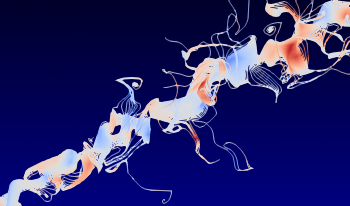
This study evaluates the benefit of using parallelism from GPUs or multi-core CPUs for particle advection workloads. We perform 1000+ experiments, involving four generations of Nvidia GPUs, four CPUs with varying numbers of cores, two particle advection algorithms, many different workloads (i.e., number of particles and number of steps), and, for GPU tests, performance with and without data transfer. The results inform whether or not a visualization developer should incorporate parallelism in their code, what type (CPU or GPU), and the key factors influencing performance. Finally, we find that CPU parallelism is the better choice for most common workloads, even when ignoring costs for data transfer.
Abhishek Yenpure, David Pugmire, Hank Childs, "Steady-state Particle Advection Speed-ups from GPU and CPU Parallelism" in Electronic Imaging, 2025, pp 179-1 - 179-16, https://doi.org/10.2352/EI.2025.37.12.HPCI-179
 Find this author on Google Scholar
Find this author on Google Scholar Find this author on PubMed
Find this author on PubMed